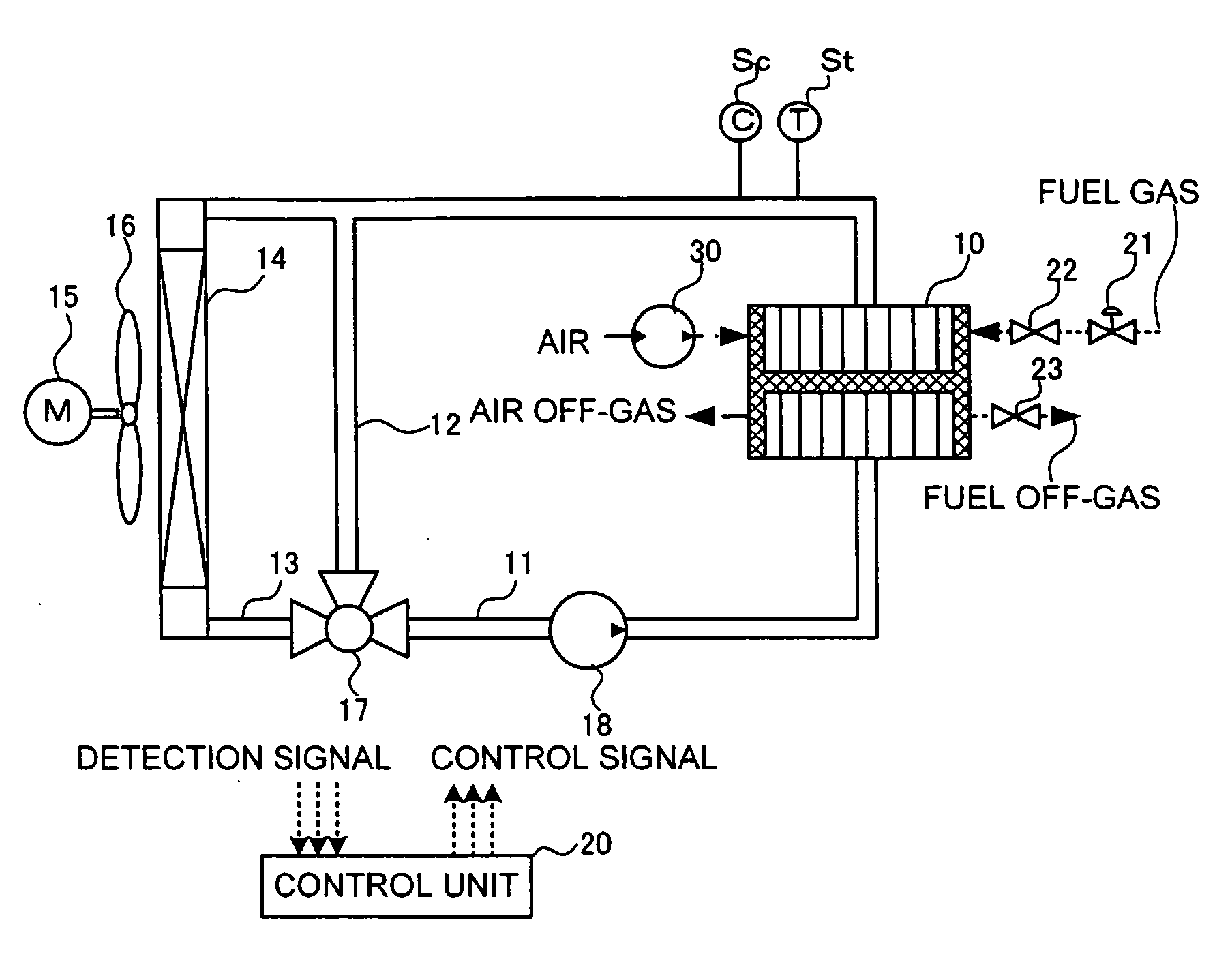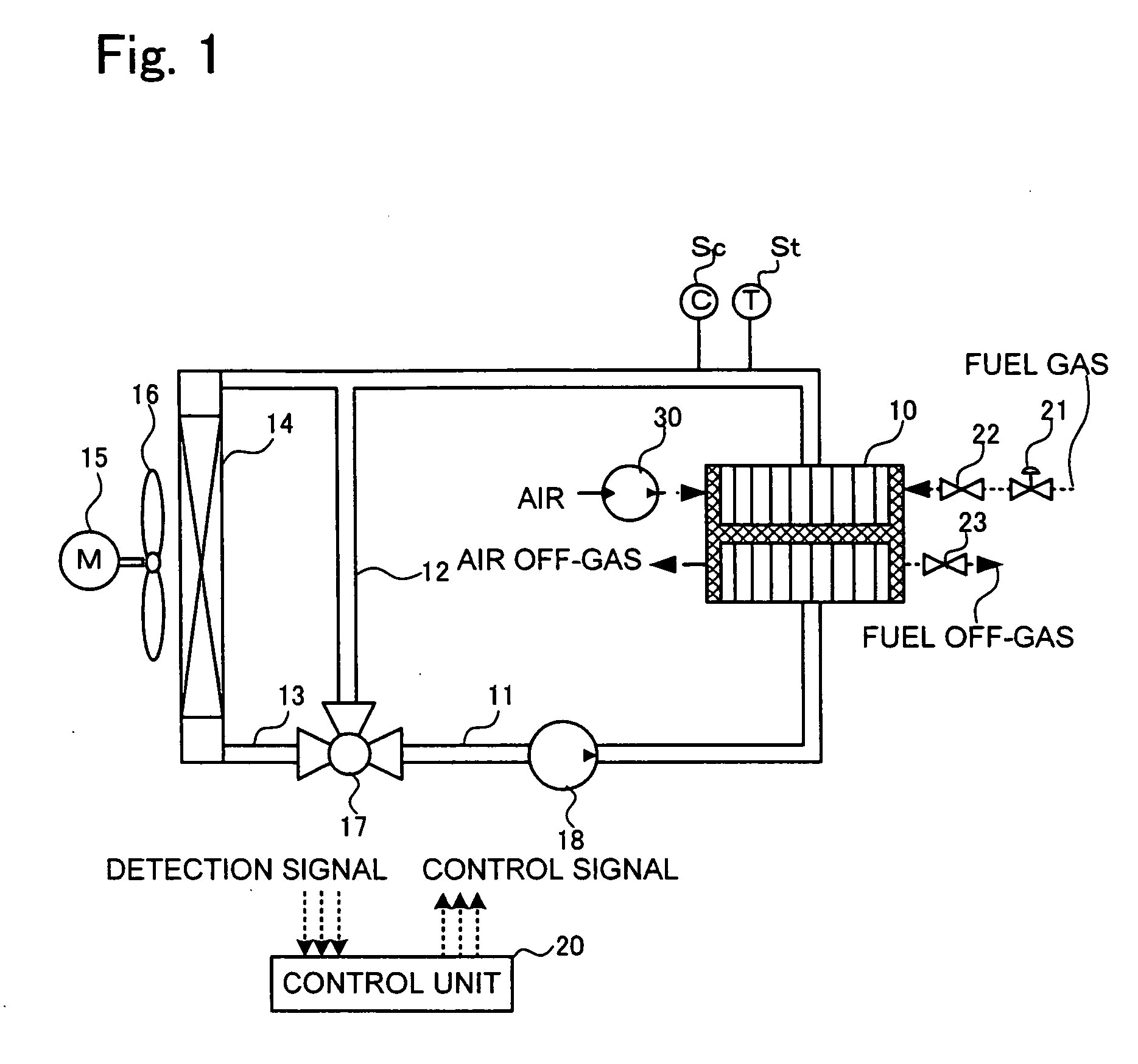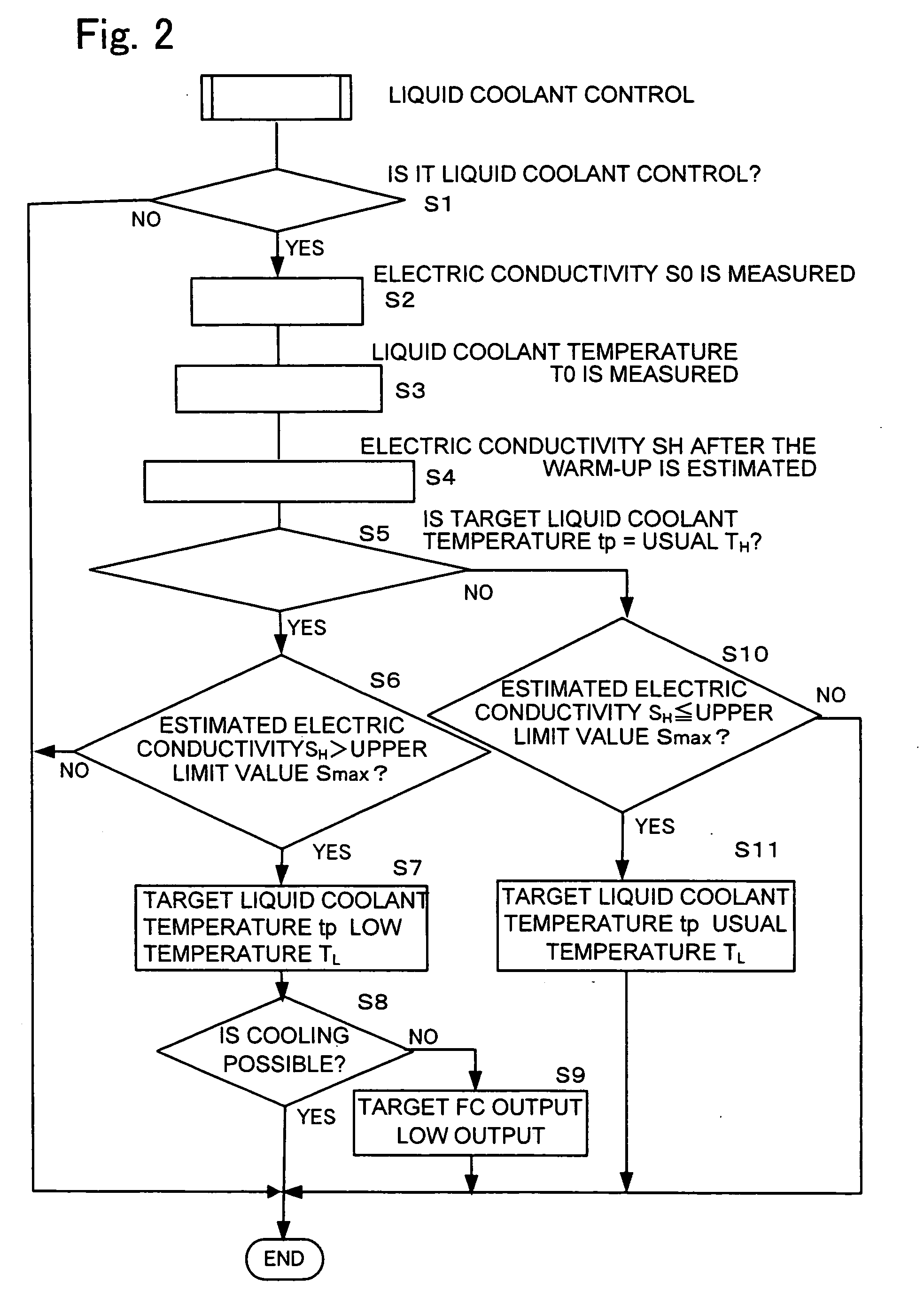Cooling Device and Cooling Method for Fuel Cell
a fuel cell and cooling device technology, applied in the direction of fuel cells, electrical appliances, electrochemical generators, etc., can solve the problem that the electric conductivity can eventually exceed the allowed limit, and achieve the effect of decreasing the electric conductivity of the coolant, reducing the quantity of electric conductivity, and reducing the electric conductivity
- Summary
- Abstract
- Description
- Claims
- Application Information
AI Technical Summary
Benefits of technology
Problems solved by technology
Method used
Image
Examples
embodiment 1
[0030]Embodiment 1 of the present invention relates to cooling control in the case where direct decrease in the electric conductivity by electric conductivity decreasing device is not taken into account. FIG. 1 shows the entire configuration of the present fuel cell system. As shown in FIG. 1, in the fuel cell system, a circulation channel 11 of a liquid coolant is provided so that the liquid coolant can be circulated inside a fuel cell stack 10. The circulation channel 11 is divided into a bypass channel 12 and a cooling channel 13 where a radiator 14 is provided. The circulation channel is configured so that the bypass channel 12 and cooling channel 13 can be selected by a three-way valve 17. A liquid coolant pump 13 that is driven at a revolution speed based on a control signal from a control unit 20 is provided in the circulation channel 11, thereby enabling forced circulation of the liquid coolant. A thermometer St for detecting the temperature of the liquid coolant and an elec...
embodiment 2
[0058]Embodiment 2 of the present invention, by contrast with Embodiment 1, relates to a cooling control which employs an electric conductivity decreasing device and takes the direct decrease in electric conductivity into account. FIG. 5 illustrates the entire configuration of the present fuel cell system. As shown in FIG. 5, in this fuel cell system, an ion exchanger 19, which is equivalent to the electric conductivity decreasing device in accordance with the present invention, is provided in the circulation channel 11 of a liquid coolant in Embodiment 1. Furthermore, a heat exchanger 30 is provided in the circulation channel 11, and a secondary cooling device serving to conduct heat exchange via this heat exchanger with the liquid coolant flowing through the circulation channel 11, which is a primary channel, is provided. The secondary cooling device comprises a pressure adjusting valve 31, a condenser 32, and a circulation pump 33 and is so configured that heat can be taken by th...
PUM
 Login to View More
Login to View More Abstract
Description
Claims
Application Information
 Login to View More
Login to View More - R&D
- Intellectual Property
- Life Sciences
- Materials
- Tech Scout
- Unparalleled Data Quality
- Higher Quality Content
- 60% Fewer Hallucinations
Browse by: Latest US Patents, China's latest patents, Technical Efficacy Thesaurus, Application Domain, Technology Topic, Popular Technical Reports.
© 2025 PatSnap. All rights reserved.Legal|Privacy policy|Modern Slavery Act Transparency Statement|Sitemap|About US| Contact US: help@patsnap.com



